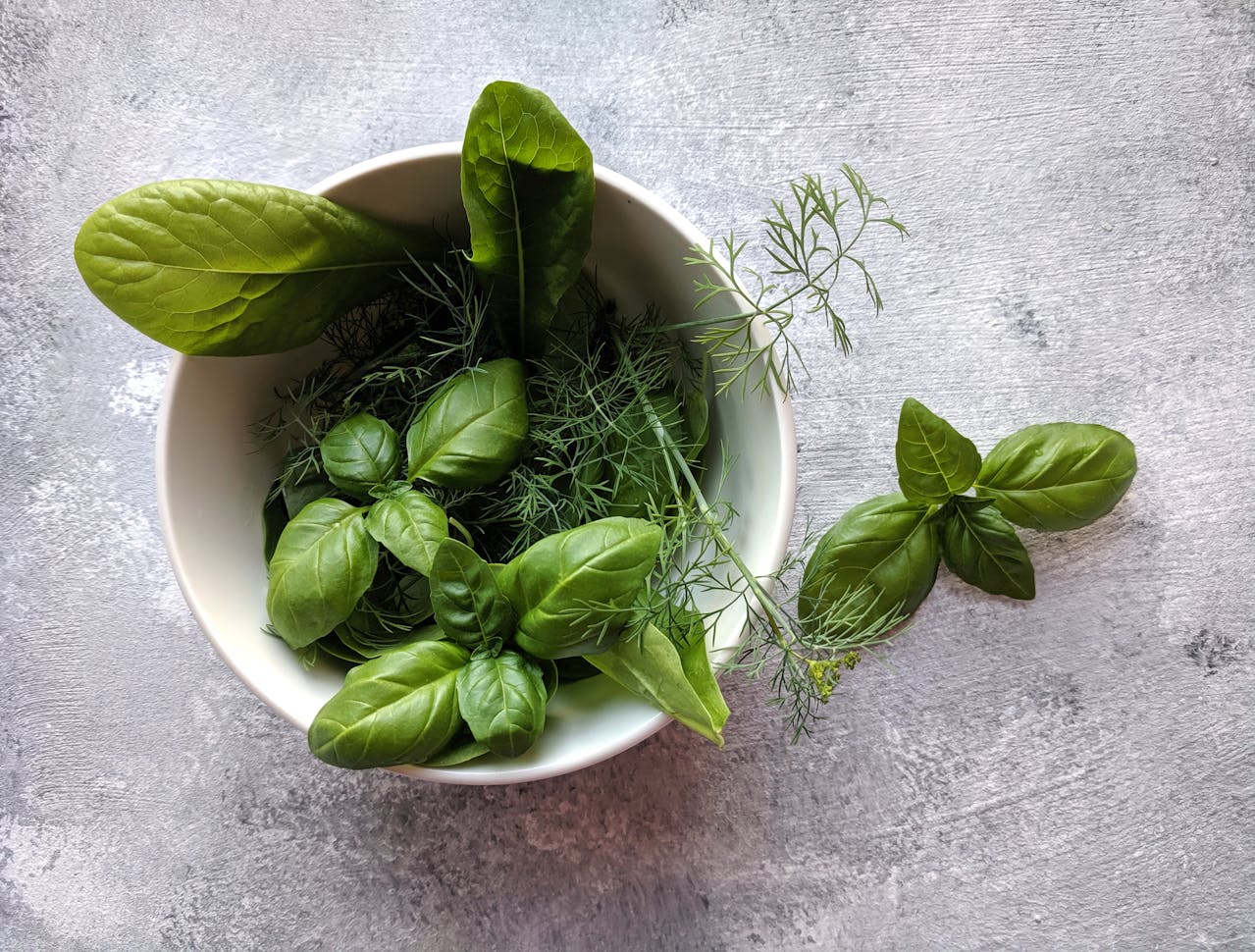Antibacterial Effects of Basil (Ocimum sanctum) Leaf Extract in Combination with Meropenem against Extended Spectrum Beta-Lactamase (ESBL) Producing Klebsiella pneumoniae

Downloads
Highlights:
- Ocimum sanctum leaf extract does not significantly increase its antibacterial effects when combined with meropenem against ESBL-producing K. pneumoniae.
- Ocimum sanctum leaf extract has different antibacterial effects depending on geological and environmental factors.
Abstract
Introduction: Antibiotic usage for bacterial infections causes antibiotic resistance in bacteria. One is extended-spectrum beta-lactamase (ESBL), which produces Klebsiella pneumoniae, a pathogen responsible for increased antibiotic resistance. Basil (Ocimum sanctum) is a candidate for combination therapy. It has been proven to have antibacterial effects. However, its combination with antibiotics is rarely researched. This study evaluated the antibacterial effects of O. sanctum leaf extract and meropenem combination against ESBL-producing K. pneumoniae.
Methods: This study used the disk diffusion method. The extract was tested for each experiment at 6%, 4%, 2%, 1%, and 0.5% concentration. The research was divided into two experiments to evaluate the antibacterial effects of O. sanctum leaf extract (n=18) and its combination with meropenem against ESBL-producing K. pneumoniae (n=18). The data was analyzed using the International Business Machines Corporation (IBM) Statistical Package for the Social Sciences (SPSS) version 26.0 for Windows. A probability p<0.050 was considered significant.
Results: The first experiment showed that the extract had the largest antibacterial effect at 0.5% concentration (n=18, p=0.007). Meanwhile, the second experiment showed that the combination of the extract and meropenem did not have significant antibacterial effects (n=18, p=0.597).
Conclusion: Ocimum sanctum leaf extract has viable antibacterial effects, but its combination with Meropenem does not significantly improve its antibacterial effects against Extended Spectrum Beta-Lactamase (ESBL) producing K. pneumoniae.
Mancuso G, Midiri A, Gerace E, et al. Bacterial Antibiotic Resistance: The Most Critical Pathogens. Pathogens; 10. 2021. [PubMed]
Liu W, Chen G, Dou K, et al. Eugenol Eliminates Carbapenem-Resistant Klebsiella pneumoniae via Reactive Oxygen Species Mechanism. Front Microbiol; 14, (2023). [Journal]
Erianto AV, Asmarawati TP, Widodo ADW, et al. Bacterial Profile and Antibiotic Use in Catheter-Associated Urinary Tract Infection Patients at a Tertiary Referral Hospital in Surabaya, Indonesia. Folia Medica Indones 2023; 59: 143–149. [Journal]
Amir M, Brown JA, Rager SL, et al. Maternal Microbiome and Infections in Pregnancy. Microorganisms; 8. 2020. [PubMed]
Abidanovanty FM, Suryawan A, Hendarto H. Growth and Development on Infants Aged 0-24 Months with a History of Low Birth Weight (LBW) in Dr. Soetomo General Hospital Surabaya. Indones J Public Heal 2023; 18: 230–241. [Journal]
Alillah S, Nasrul E, Alia E. Prevalensi dan Pola Sensitivitas Antibiotik Klebsiella pneumoniae dan Escherichia coli Penghasil Extended Spectrum Beta Laktamase di RSUP Dr. M Djamil Padang. J Kesehat Andalas 2020; 9: 189. [Journal]
Effah CY, Sun T, Liu S, et al. Klebsiella pneumoniae: An Increasing Threat to Public Health. Ann Clin Microbiol Antimicrob 2020; 19: 1. [PubMed]
Nathania M, Wasito EB, Hasanathuludhiyah N. In Vitro Antibacterial Activity of Averrhoa bilimbi Leaves Ethanol Extract against Salmonella typhi. JUXTA J Ilm Mhs Kedokt Univ Airlangga 2023; 14: 42–45. [Journal]
Felicia A, Debora K, Ramadhani R. In Vitro Antimicrobial Activity Evaluation of Ginger (Zingiber officinale) Absolute Ethanol Extract against Uropathogenic Escherichia coli (UPEC). JUXTA J Ilm Mhs Kedokt Univ Airlangga 2022; 13: 51–56. [Journal]
Yuanita T, Mooduto L, Lina R, et al. Minimum Inhibitory Concentration of Cocoa Pod Husk Extract in Enterococcus faecalis Extracellular Polymeric Substance Biofilm Thickness. Dent J (Majalah Kedokt Gigi) 2019; 52: 215. [Journal]
Ayaz M, Ullah F, Sadiq A, et al. Synergistic Interactions of Phytochemicals with Antimicrobial Agents: Potential Strategy to Counteract Drug Resistance. Chem Biol Interact 2019; 308: 294–303. [PubMed]
Hasan MR, Alotaibi BS, Althafar ZM, et al. An Update on the Therapeutic Anticancer Potential of Ocimum sanctum L.: “Elixir of Life”. Molecules; 28. 2023. [PubMed]
Sasmito E, Hidayati AN, Rahmadewi, et al. Comparison of Antifungal Susceptibility Basil Leaves Extract (Ocimum sanctum Linn.), Eugenol, and Nystatin against Isolates of Candida spp. as Important Agent Causing Oral Candidiasis in HIV/AIDS Patient. Berk Ilmu Kesehat Kulit dan Kelamin 2022; 34: 162–168. [Journal]
Srichok J, Yingbun N, Kowawisetsut T, et al. Synergistic Antibacterial and Anti-Inflammatory Activities of Ocimum tenuiflorum Ethanolic Extract against Major Bacterial Mastitis Pathogens. Antibiotics; 11. 2022. [PubMed]
Chanthaboury M, Choonharuangdej S, Shrestha B, et al. Antimicrobial Properties of Ocimum Species: An In Vitro Study. J Int Soc Prev Community Dent; 12, (2022). [Journal]
Nie NH, Bent DH, Hull CH. Statistical Package for the Social Sciences (SPSS), (2018). [Website]
Khanifah F, Susanto A, Yasmin FTN. Daya Hambat Ekstrak Etanol Daun Kemangi (Ocimum sanctum Linn) pada Pertumbuhan Bakteri Klebsiella pneumoniae. J Insa Cendekia 2023; 10: 153–159. [Journal]
Fonseka H, Arawwawala M, Kulathunga W. Comparison on Phytochemical and Physico-Chemical Parameters of Ocimum sanctum Linn Grown in Different Locations of Sri Lanka. Sch Int J Tradit Complement Med 2020; 3: 157–161. [ResearchGate]
Kumar R, Saha P, Lokare P, et al. A Systemic Review of Ocimum sanctum (Tulsi): Morphological Characteristics, Phytoconstituents and Therapeutic Applications. Int J Res Appl Sci Biotechnol 2022; 9: 221–226. [Journal]
Biharee A, Sharma A, Kumar A, et al. Antimicrobial Flavonoids as a Potential Substitute for Overcoming Antimicrobial Resistance. Fitoterapia 2020; 146: 104720. [PubMed]
Farha AK, Yang QQ, Kim G, et al. Tannins as an Alternative to Antibiotics. Food Biosci 2020; 38: 100751. [ScienceDirect]
Dong S, Yang X, Zhao L, et al. Antibacterial Activity and Mechanism of Action Saponins from Chenopodium quinoa Willd. Husks against Foodborne Pathogenic Bacteria. Ind Crops Prod 2020; 149: 112350. [ScienceDirect]
Yan Y, Li X, Zhang C, et al. Research Progress on Antibacterial Activities and Mechanisms of Natural Alkaloids: A Review. Antibiotics; 10. 2021. [PubMed]
Wang G, Zhao G, Chao X, et al. The Characteristic of Virulence, Biofilm and Antibiotic Resistance of Klebsiella pneumoniae. Int J Environ Res Public Health; 17. 2020. [PubMed]
Copyright (c) 2024 Billy Yanssen Lifindra, Nurul Wiqoyah, Danti Nur Indiastuti

This work is licensed under a Creative Commons Attribution-ShareAlike 4.0 International License.
1. The journal allows the author to hold the copyright of the article without restrictions.
2. The journal allows the author(s) to retain publishing rights without restrictions
3. The formal legal aspect of journal publication accessibility refers to Creative Commons Atribution-Share Alike 4.0 (CC BY-SA).




























